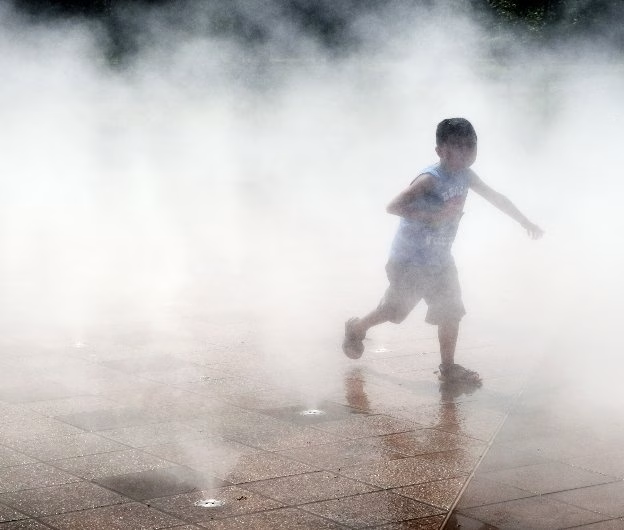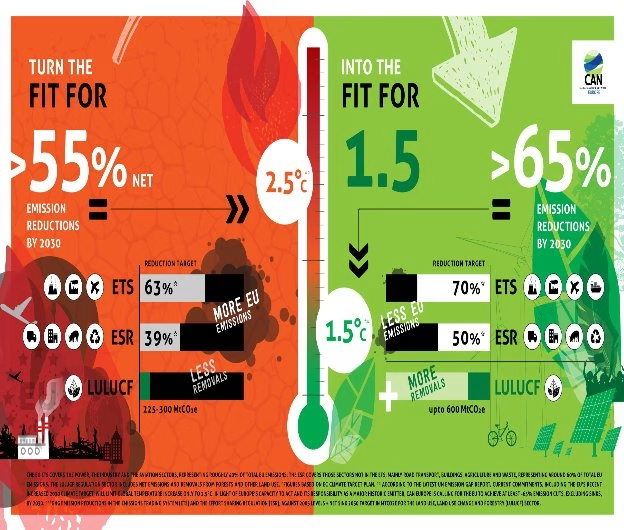|
Getting your Trinity Audio player ready...
|
As some heat caused deaths has already been reported, scientist investigate how much can we tolerate
This summer, for several months was registered series of intense heatwaves throughout Northern Hemisphere summer, standing out as the hottest on record by a considerable margin, having considerable consequences on human well-being and the expectancy to persist as a global challenge for decades to come.
167 people died in Mexico this summer and in August in Iran’s Qeshm Dayrestan airport high humidity and temperature killed healthy people in couple of hours. In July, in China’s northwestern Xinjiang region and California’s Death Valley over 52 °C were recorded.
Considering the above mentioned examples and many more, researchers assert that climate change will lead to a rise in both the frequency and severity of such heat events, raising apprehensions regarding the human body’s resilience to extreme temperatures and the adaptability of societies.
While some regions may still experience occasional colder periods and milder summers due to annual variations, according to Colin Raymond, a climate scientist at the University of California, Los Angeles, the prevailing trend of global warming will inevitably result in heatwaves that test the limits of human endurance and expose individuals to health hazards.
Organ disfunctions
The adverse effects of heat on the human body are strong on the heart and kidneys, the brain is also affected by the headaches, disruption of sleep patterns, and a reduction in cognitive function. Also, in severe cases, heat stroke can lead to multi-organ failure, as highlighted in the article ‘Taking the heat.’ Romanello emphasizes that heat stroke represents a critical medical emergency and can be fatal.
Specific studiesfrom the Indian Institute of Public Health revealed that heat’s impact on the kidneys may be a contributing factor to the elevated rates of unexplained chronic kidney disease observed among young agricultural laborers in various countries, such as El Salvador, India, and Pakistan, according to Ollie Jay, a physiologist affiliated with the University of Sydney in Australia. Outdoor workers, including those in agriculture and construction, endure prolonged exposure to high temperatures, often with limited access to hydration leading to 1.4-fold increase in the risk of kidney dysfunction when compared to individuals engaged in indoor physical occupations.
Heat rise is more dangerous to vulnerable people such as newborns, to people already holding health conditions like hearth or kidneys diseases and for elders over 75 years old. Also elevated incidences of respiratory and cardiovascular diseases, an increase in suicide rates are expected. Even premature births and low birth weights is projected to rise due to the detrimental impact of heat on placental blood flow, which disrupts the oxygen and nutrient supply to the fetus. Mostly if all of these presumptions come true, a huge pressure will affect medical systems bringing it to the verge of collapse in some cases.
Heat strikes hard in combination with humidity
Until then scientists are currently investigating the boundaries of the human body’s tolerance for heat but establishing a universally accepted temperature threshold is challenging because the effects of heat vary based on factors like humidity and the temperatures commonly reported in weather forecasts are typically dry air temperatures recorded by standard thermometers, which do not account for other variables affecting the human body. To incorporate factors such as humidity, scientists employ a metric known as wet-bulb temperature. This metric acknowledges that sweat evaporates less efficiently when the air is saturated with moisture, as explained by Jay.
So far it was approximated that a critical wet-bulb temperature for human survival is 35 °C. At this critical point, even the healthiest individuals can endure for just approximately six hours, as the body cannot dissipate heat through sweating or radiation, ultimately leading to heat stroke.
The regions with the highest wet-bulb temperatures are typically found in subtropical, coastal areas of South Asia, the Middle East, and southwestern North America, characterized by a potent combination of high heat and humidity.
Back to 1979, an analysis of a weather station revealed that a wet-bulb temperatures in Pakistan and the Gulf region briefly exceeded the 35 °C threshold for one or two hours at various times and this episodes increase in occurrences since 2003 and on.
This year, on July 6, during the hottest day ever recorded globally, wet-bulb temperatures soared to as high as 27 °C in several Southern European countries, including Spain and Italy.
However, Ollie Jay points out that the estimated limit of 35 °C is not a perfect measure. He suggests that the human body might reach its limits at a considerably lower temperature. This 35 °C limit was established using computational models that treat the human body as an object, overlooking certain physiological factors, such as the actual sweat production capacity of individuals. According to Jay, in hot and arid environments, survival may be compromised well before reaching the 35 °C wet-bulb limit due to an inability to generate sufficient sweat. Furthermore, these models assume complete sedentary conditions, neglecting heat production from physical activity. Jay argues that a more practical limit should consider a person engaged in various tasks.”
Jay’s team aims to establish a more precise threshold for human survivability by taking various factors into account. To achieve this, they intend to validate their model using a climate chamber located at the University of Sydney in Australia. This chamber enables them to assess heart strain and kidney function in human participants while gradually increasing heat and humidity until body temperatures reach 39.5 °C. From the gathered data, the researchers will then make predictions regarding how different conditions lead to the onset of heat stroke. Jay explains that they can use these findings to extrapolate changes in the body from sub-critical core temperatures to critical limits.
Additionally, Jay plans to investigate the most effective strategies for managing extreme heat. He highlights that current recommendations for protective measures are largely based on controlled laboratory studies. The next phase of their research involves testing these interventions in real-world heatwaves. The team envisions conducting such a study among individuals in India during the hot season. They are also in the process of developing wearable devices designed to monitor parameters such as dehydration, kidney function, blood pressure, and heart rates.
There are ways to fight it
In affluent areas, often found in the more economically developed global regions, air conditioning is considered one of the most effective means of cooling individuals down. However, this reliance on air conditioning comes at a cost, as it necessitates electricity, leading to the emission of greenhouse gases that contribute to planetary warming due to the burning of fossil fuels, as pointed out by Olie Jay. Furthermore, it is suggested that prolonged use of air conditioning might even diminish people’s ability to adapt to higher temperatures naturally over time, as their bodies become acclimatized to the artificially controlled environment.
Exploring more sustainable approaches could yield better long-term results. Simple and cost-effective methods, such as misting the skin with water using a spray bottle or sponge and immersing feet in cold water, can effectively lower the body’s temperature. Electric fans offer a much more energy-efficient alternative, consuming as little as one-fiftieth of the electricity required for air conditioning while delivering a similar cooling effect. In Japan, there is an energy-saving campaign that encourages a straightforward change: swapping heavy business attire for cooler, lighter clothing options.
Long-term, more environmentally-friendly approaches could potentially yield better results. Simple and affordable methods, such as moistening the skin with a spray bottle or sponge and submerging the feet in cold water, offer easy ways to reduce body temperature. Electric fans are highly efficient, using only a fraction (one-fiftieth) of the electricity required by air conditioning to achieve equivalent cooling. In Japan, an energy conservation initiative promotes a straightforward adjustment: replacing heavy business attire with lighter, cooler clothing options.
Modifying the environment can also be a beneficial strategy. In Freetown, Kargbo and fellow local residents have planted a staggering 750,000 trees. Trees have the capacity to cool urban areas by providing shade and releasing water vapor. Additionally, Kargbo has played a role in installing reflective covers on market stalls to offer protection from the sun for fruit and vegetable vendors.
In various countries, including India, France, the United Kingdom, and Spain, early-warning systems serve as alerts to both healthcare systems and the general public about upcoming hot days. For instance, in a trial conducted in Ahmedabad, India, the implementation of an early-warning system resulted in a remarkable 30–40% reduction in mortality during heatwaves, according to Mavalankar. Consequently, many cities and states in India have now adopted this strategy.
However, challenges persist in less affluent regions, particularly those in the global south. As Mavalankar notes, one significant challenge is the lack of comprehensive health data pertaining to disease rates and mortality. This deficiency makes it difficult to quantify the effectiveness of heat-adaptation approaches, as highlighted by Kargbo.
Descoperă mai multe la Radio Clasic FM
Abonează-te ca să primești ultimele articole prin email.













